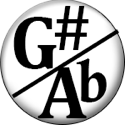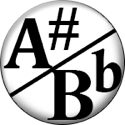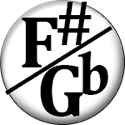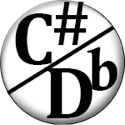利用八度音来记忆吉他指板
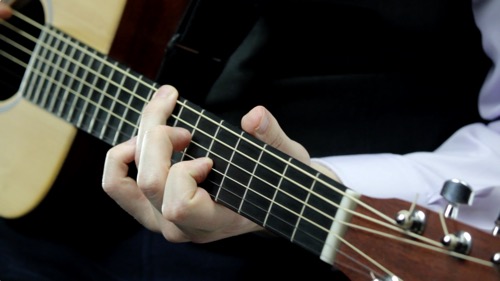
Hi. This is Hub Guitar.
Let's talk about how to memorize the notes on the guitar neck.
Why is this important? It's a step that few players ever make it to. One of the most common things we hear from players who have been trying to learn for years and years is that they felt frustrated that they could never learn all of the notes on the guitar neck.
But actually, it's not that hard to do. You just need a reliable method.
The first thing you should do is learn how to play and visualize all of the octaves. This is the most useful tool in your toolkit because when you're not sure what a note is, you can visualize the octave below, and the octave above. If you know what one of those notes are, then you know what the original note was, too.
The most basic one is the two octave shape. So we have an E and E here, make sense that this is an octave. So the same fret on the low E string is gonna be the same note as the same fret on the high E string, so here is 2C notes.
Next, we have more octaves on the low E string. First one is eighth fret of the fifth string, and fifth fret of the third string. Next one is eighth fret of the sixth string and tenth fret of the fifth string. This is pretty easy to remember. It's two strings down and two frets up. Now we're gonna move that C to the fifth string here, we are gonna do it again. The one that goes across two strings, that's actually the same as this one that we did back here. But it does look a little bit different and that's because we acrossed over the boundary of the B string. The B string is a little bit different than other notes. So whenever we cross over that boundary, our pattern is going to appear to change a little bit and it's gonna look like it shrank a little bit, but that's just because the B string is tuned bit different. Now we are gonna do octave from the C on the fourth string, so the first octave is this one, now you can see that this is actually the same pattern that we did here and here, but again, since we cross over the B string, we've got adjust our pattern up by one half step. That's the first octave and second one is this octave. So this octave is really pretty similar to this octave here. And we've got one more, we're gonna do the C on the fifth fret of the third string, and it's octave here like that.
So memorize that octaves and that will really be the first step that helps you link together all of the notes, understanding the guitar fretboard.
概述
如果让你学习吉他指板上的每一个音符听上去好像有些让人怯步。许多吉他手因为懒惰迟迟没能做到,但是你不能在学习吉他的过程中不学习认识音符。.
与背下来所有的音符相比,一个比较聪明的方法是首先学习判断音符的方法。
Stage 1. 牢记所有的空弦的名称和chromatic scaleA scale consisting of all 12 of the notes used in modern music.。
Result: 你可以通过空弦向上数算出音符。
Stage 2. 使用第一步的方法,记忆第六和第五弦上的所有音符。
Result:这一步以后,你知道怎样弹奏大多数的封闭和弦,因为它们的根音一般都是在6th 或者 5th 弦上的。
Stage 3. 学习八度的所有指法。
Result: 遇到不熟悉的音符可以把它们“移动到”你熟悉的八度里,生成一个快速得到音名的方法。
Stage 4. 最后拆掉脚手架
Result: 你已经记住了所有的音符名。
贴士: 越多的方法,越快地记住。
这节课涉及到了使用八度来快速通过比较识别音符。
两个八度
low E弦 和 high E弦之间地八度
这里第一个八度我们已经熟悉了:在low E弦上的任意品的音符和high E弦的一样。
Low E弦的八度
接下去的两个八度很相似,首先,如果你要弹在low E弦上的这个音符的高八度音,它会是向右两品,然后再向上两根弦。因此,一旦你学习了E弦以后,你就可以视觉化第四弦上的音符了。
另外,你也可以再第三弦上找到相同的八度,但是它是向左两品。
第五弦的八度
第五弦的八度和第六弦的看上去很像:
第五弦到第三弦的八度和之前那个是一样的—向右两品,向上两弦。
2nd弦和5th弦的八度看上去有一些不一样。现在既然我们已经跨到了B弦,为了保持原本的值,我们的间隔要比原来大一品。这是因为B弦被“补偿了”一品。
第四弦的八度
第四弦上的八度音和我们之前碰到的看上去有点像,除了这次要再加一品。这是以为我们已经到了“B”弦,所以需要向上调整一品来补偿丢失的半音。
第三弦的八度
这个八度和我们之前看到过的其他琴弦八度一样,它也被拉长了半个音,为了补偿从G弦到B弦中丢失的半音。记住:如果你的第一个音符是在B弦下面的,而且你的高音符间隔在 或 高于B弦,你会丢失半个音,必须要把间隔向上调整半音。
尾声
学习吉他的八度音是很重要的,这将会给你一个工具来学习吉他指板上的所有音符。
本日目标
- 选择一个音,定位出相关的所有八度音。
- 尝试优美地弹奏八度音;用高低八度弹奏你最喜欢的一首旋律。
- 如果你想要学习更多的指板记忆法,点击指板记忆的下一堂课。
 As the creator of Hub Guitar, Grey has compiled hundreds of guitar lessons, written several books, and filmed hundreds of video lessons. He teaches private lessons in his Boston studio, as well as via video chat through TakeLessons.
As the creator of Hub Guitar, Grey has compiled hundreds of guitar lessons, written several books, and filmed hundreds of video lessons. He teaches private lessons in his Boston studio, as well as via video chat through TakeLessons.




